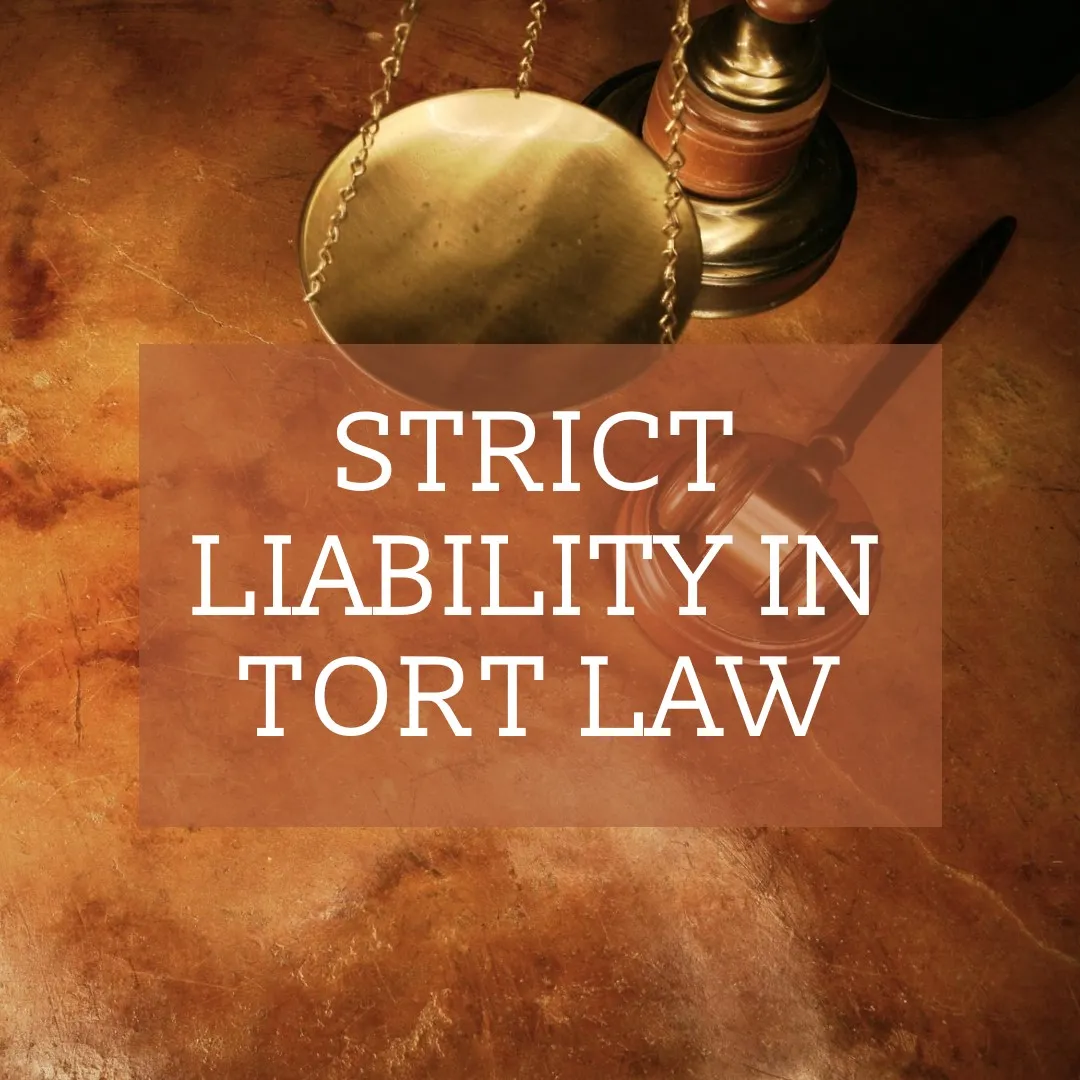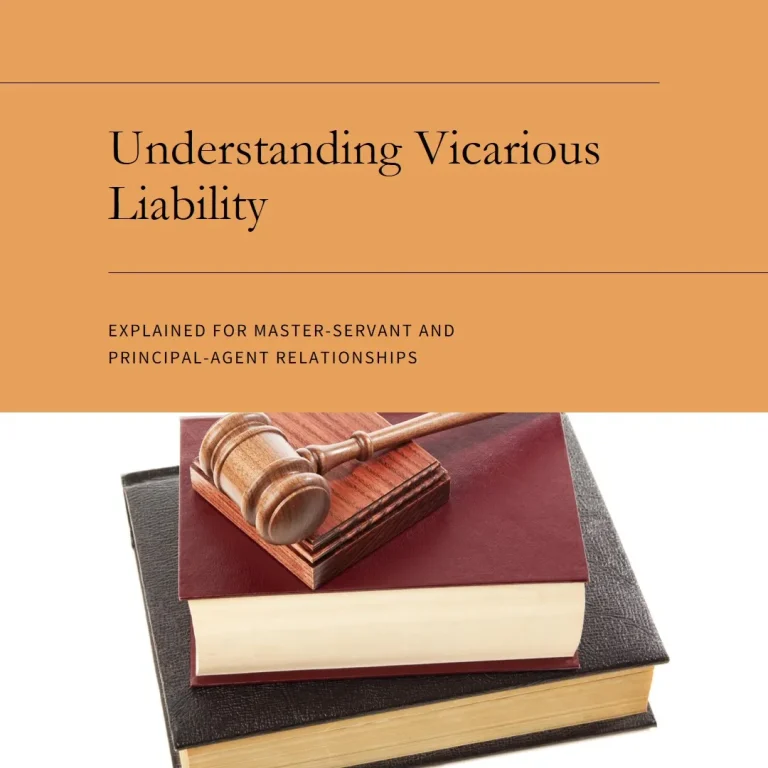
What is Strict Liability?
Overview
Strict liability is a legal concept where someone (the defendant) is held responsible for damages or injuries caused by their actions, even if they didn’t intend to cause harm and took all possible precautions. This means that the defendant can be found liable without needing to prove they were at fault or negligent.
Strict Liability in the Context of Criminal Law
In criminal law, “strict liability” refers to a situation where a person is held responsible for a crime, even if they didn’t intend to commit it or didn’t know they were doing something wrong. This means that the person’s mental state or intentions are not considered when deciding whether they are guilty or not.
Five Mental States (Mentes Reae) in Criminal Law
In criminal law, there are five possible mental states that a person can have when committing a crime. These are:
- Acting Knowingly: The person knows what they are doing and intends to do it.
- Acting Purposely: The person has a specific goal in mind and intends to achieve it, even if it means breaking the law.
- Acting with Recklessness: The person is aware of the risks of their actions, but they don’t care or don’t think about the consequences.
- Acting with Negligence: The person is careless or fails to take reasonable care, which leads to harm or damage.
- Strict Liability: The person is responsible for the crime, regardless of their mental state or intentions.
How Strict Liability Works
In cases of strict liability, the person’s awareness or knowledge of what they are doing is not important. What matters is that they committed the act, regardless of whether they knew it was wrong or not. For example:
- If someone is found with illegal drugs in their possession, they can be held responsible for the crime, even if they didn’t know the drugs were in their bag or didn’t intend to possess them.
- If a company sells a product that is defective and causes harm to someone, the company can be held responsible, even if they didn’t know the product was defective or didn’t intend to cause harm.
Punishments for Strict Liability
Generally, punishments for strict liability offenses are less severe than those for other mental states. This is because the person’s intentions or mental state are not considered when determining guilt. However, the punishment can still be significant, depending on the specific law and circumstances of the case.
Key Points to Remember
- Strict liability is a mental state in criminal law where a person is held responsible for a crime, regardless of their intentions or knowledge.
- There are five mental states in criminal law, and strict liability is one of them.
- In cases of strict liability, the person’s awareness or knowledge of what they are doing is not important.
- Punishments for strict liability offenses are generally less severe than those for other mental states.
Key Points of Strict Liability
- No Need to Prove Fault: The injured party (plaintiff) does not have to prove that the defendant was careless or intended to cause harm.
- Liability for Precautionary Actions: Even if the defendant took all reasonable steps to avoid causing harm, they could still be held responsible if the harm falls under strict liability.
Strict Liability in the Context of tort law
Two Broad Categories of Strict Liability in Tort Law
In tort law, there are two main categories of activities for which a person or company (the defendant) can be held strictly liable. This means that they can be held responsible for the harm caused, even if they didn’t intend to cause harm or weren’t negligent.
1. Possession of Certain Animals
The first category is possession of certain animals. This means that if someone owns or is in charge of an animal that is known to be dangerous, they can be held responsible for any harm the animal causes, even if they didn’t know the animal would cause harm. For example:
- If someone owns a dog that bites someone, they can be held responsible for the injuries, even if they didn’t know the dog was aggressive.
- If a zookeeper is in charge of a wild animal that escapes and causes harm, they can be held responsible, even if they took reasonable care to prevent the escape.
2. Abnormally Dangerous Activities
The second category is abnormally dangerous activities. This means that if someone engages in an activity that is known to be highly risky or dangerous, they can be held responsible for any harm caused, even if they took precautions. For example:
- If someone operates a fireworks factory and an explosion causes harm to nearby residents, they can be held responsible, even if they followed safety protocols.
- If a company engages in toxic waste disposal and the waste causes environmental harm, they can be held responsible, even if they followed regulations.
Strict Products Liability
In addition to these two categories, there is a sub-category of strict liability known as strict products liability. This applies when a defective product causes injury to someone. A defective product is one that is unreasonably dangerous or has a design or manufacturing flaw.
- If a company manufactures a car with a faulty brake system that causes an accident, they can be held responsible for the injuries, even if they didn’t know about the defect.
- If a pharmaceutical company produces a medication that has a harmful side effect, they can be held responsible for any injuries caused, even if they didn’t know about the side effect.
Key Points to Remember
- In tort law, strict liability applies to two broad categories: possession of certain animals and abnormally dangerous activities.
- Strict liability means that the defendant can be held responsible for harm caused, even if they didn’t intend to cause harm or weren’t negligent.
- Strict products liability is a sub-category of strict liability that applies to defective products that cause injury.
- The goal of strict liability is to compensate the plaintiff for their losses, rather than to punish the defendant.
Example of strict liability through Rylands v Fletcher: A Landmark Case
One of the most famous examples of strict liability is the case of Rylands v Fletcher. Here are the details:
- Facts: Rylands (the defendant) hired contractors to build a reservoir to supply water to his mill. The contractors did their job negligently and didn’t notice old mine shafts under the land. Water from the reservoir escaped through these shafts and flooded Fletcher’s (the plaintiff) coal mine, causing significant damage.
- Issue: Can the plaintiff sue the defendant for damages under strict liability?
- Court’s Decision: The court decided that if someone brings something onto their land that could cause damage if it escapes, they are responsible for any harm it causes. This is true even if they took precautions. However, the thing brought onto the land must be a “non-natural” use of the land.
Elements Required for a Strict Liability Claim under Rylands v Fletcher
To succeed in a strict liability claim based on Rylands v Fletcher, several elements must be met:
- Accumulation: The defendant must have brought something onto their land.
- For Their Own Purpose: The thing must be kept for the defendant’s own benefit.
- Dangerous Object: The thing must be likely to cause harm if it escapes.
- Escape: The thing must actually escape and cause damage.
- Non-Natural Use of Land: The use of the land must be considered non-natural.
- Foreseeability: The damage caused must be foreseeable.
Examples to Illustrate strict liability
- Forest Rock Granite Case: The defendant was using explosives to blast rocks, which then flew onto a highway and caused injury. Although the rocks themselves were not brought onto the land, the explosives were, and they caused the rocks to escape. Thus, the defendant was liable.
- Rainham Chemical Works vs Belvedere Fish Guano: X and Y set up a company to make explosives on their land. An explosion caused damage to nearby property. The company (Z Ltd) and X and Y were held liable because the explosives, which caused the escape, were accumulated on the land.
- Tuah’s Case: Tuah stored oil in a tank to heat his glasshouse for growing orchids. The tank corroded, causing the oil to leak onto Jebat’s farm, damaging his crops and causing an accident. Since Tuah accumulated the oil for his own use, which is potentially dangerous, and the oil escaped causing foreseeable damage, he would be liable under strict liability.
Strict liability in the context of Dangerous Things
The rule of strict liability applies to anything that can cause damage if it escapes. The determination of whether something is dangerous is based on common sense: would an average person expect that the thing could cause harm if it got out?
Strict liability in the context of Non-Natural Use of Land
A defendant is liable if the thing they brought onto their land is considered a non-natural use. This means it must be an unusual or special use that increases danger to others, not a regular or ordinary use that benefits the community. Courts consider various factors like the quantity of the thing, how it is stored, and the location of the land.







One Comment